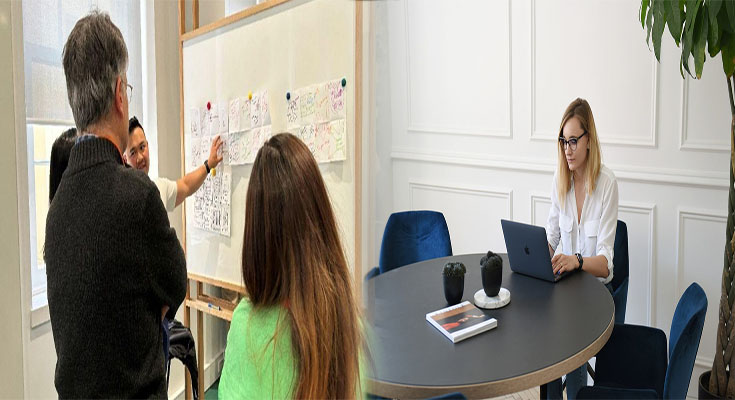Design thinking is a problem-solving approach that has gained popularity in various fields, including education. This human-centered approach encourages educators and technologists to collaborate and create innovative solutions to address the challenges faced in the education sector. When applied to developing educational technology solutions, design thinking can lead to more effective and impactful tools that enhance the learning experience. In this article, we will explore how design thinking can be applied to develop educational technology solutions.
Understanding the User: Students and Educators
The starting point of design thinking is understanding the needs, goals, and aspirations of the end users. In the case of educational technology, the primary users are students and educators. Empathy is key to gaining a deep understanding of their challenges, desires, and learning preferences. Conducting interviews, observations, and surveys can help gather insights and identify pain points. By putting ourselves in their shoes, we can design technology solutions that truly meet their needs.
Defining the Problem
Once we have gathered insights, the next step is to define the problem. This involves synthesizing the information collected and identifying the core issues that need to be addressed. For example, we may discover that students struggle to stay engaged during remote learning sessions. Based on this insight, the problem to be solved could be finding ways to make online classes more interactive and interactive.
Ideation and Prototyping
In the ideation phase, various solutions are brainstormed without limitation. This divergent thinking encourages the generation of new ideas and possibilities. From there, ideas are refined and prioritized based on feasibility, impact, and desirability.
Next comes the prototyping stage, where initial versions of the solutions are created. Prototyping can take various forms, from low-fidelity paper prototypes to interactive digital mockups. Prototypes allow for quick testing and iteration, enabling rapid learning and improvement of the proposed solutions.
Testing and Feedback
With prototypes in hand, it’s time to gather feedback from the end users – students and educators. User testing sessions provide valuable insights into how well the proposed solutions meet their needs and expectations. Testing also helps identify any potential issues or areas for improvement. Feedback from users should be actively sought and integrated into the design process.
Implementation and Iteration
Once a solution has been refined and tested, it’s time for implementation. This stage involves developing the actual educational technology solution and making it ready for deployment. It is important to work closely with teachers and students during this phase to ensure a smooth integration into the learning environment.
However, the design thinking process doesn’t end with implementation. It is an iterative process that encourages continuous improvement. Feedback and data collected during usage can inform future iterations, allowing for ongoing refinement and optimization of the technology solution.
Collaboration and Interdisciplinary Approach
Design thinking thrives on collaboration and interdisciplinary collaboration. Technology solutions for education involve a wide range of stakeholders, including educators, researchers, technologists, and policymakers. Collaborative efforts that bring together these diverse perspectives can result in more holistic and effective solutions.
Benefits of Design Thinking in Educational Technology
Design thinking brings several benefits to the development of educational technology solutions. By prioritizing the needs of students and educators, solutions become more user-centric and tailored to their specific requirements. The iterative nature of the process allows for rapid learning and adaptation, leading to continuous improvement. Design thinking fosters creativity and innovation, encouraging the exploration of new approaches to address challenges in education.
Design thinking provides a framework for developing educational technology solutions that are impactful and user-centered. By understanding the needs of students and educators, defining the problem, ideating, prototyping, testing, and iteratively improving, we can create technology solutions that truly enhance the learning experience. When educators and technologists embrace design thinking, they can collaborate to reimagine education and empower students to reach their full potential in the digital age.





